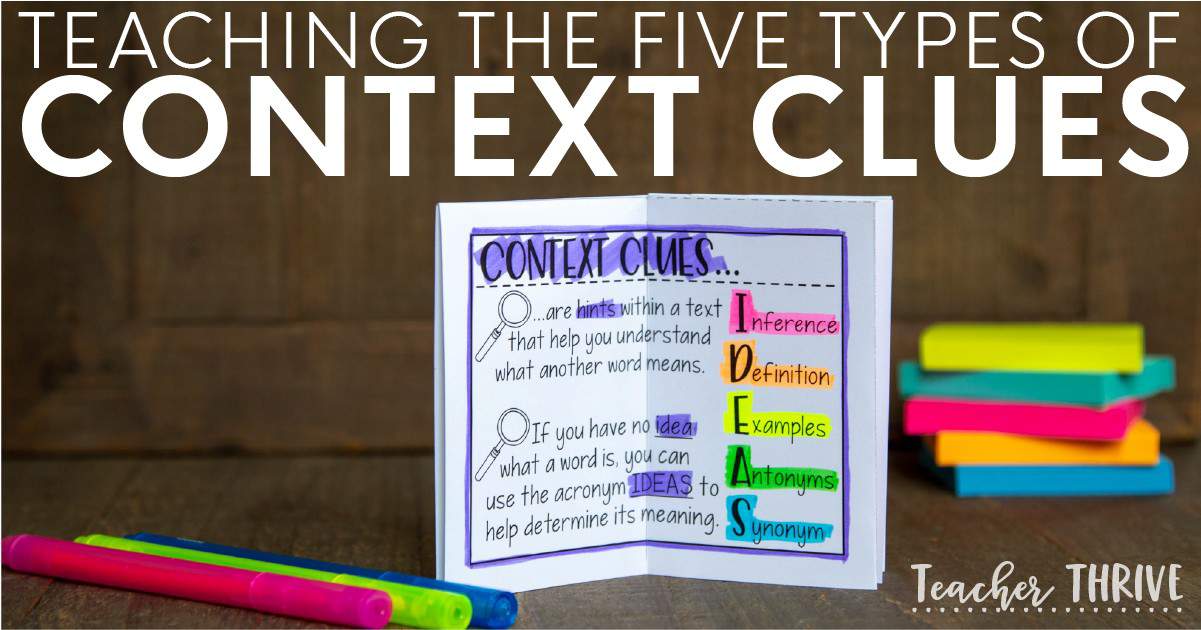Beginning in the second grade, most content standards require that students be able to utilize context clues to determine the meaning of unfamiliar words and phrases. These skills is also important for close reading. To help your students to acquire these skills, teach your students the specific types of context clues. I like to use the acronym IDEAS to help students remember the five most common types of context clues. This way if students have no idea what a word is, they can use IDEAS to help them determine it’s meaning.
1. Inference
These type of context clues require students to merge information from the text with prior knowledge (background knowledge) to determine the meaning of an unfamiliar word.
Example:
- Once the screeching car came to a halt, the acrid smell of burning rubber soon made our eyes water.
In order for a student to infer the meaning of acrid, he/she would need to have the prior knowledge of what burning rubber smelled like, or have experienced an odor that made their eyes water.
2. Definition
This type of context clue is far more straightforward than inference clues since the definition is directly stated. These context clues are commonly found in lower level (grade 2-6) content area textbooks
Example:
- Monarch butterfly larvae eat bitterly pungent milkweed, which gives the butterfly an acrid taste should it be eaten by a predator.
In the text above, the actual definition of acrid is included–bitterly pungent.
3. Example
This type of context clue includes an example (or examples) of a word’s meaning.
Example:
- Acrid odors, such as bug spray, gasoline, and smoke, make me nauseous and gives me a headache.
The text provides examples of acrid substances, which allow students to determine the meaning of the word.
4. Antonyms
This type of context clue includes non-examples or words with the opposite meaning of the unfamiliar word. The contrast allows the reader to determine the meaning of an unknown word.
Example:
- Sweet syrup and delicious strawberry juice are used to conceal the acrid taste of the medicine.
Since “sweet” and “delicious” are used to hide the acrid taste, one can deduce that acrid must be the opposite of these words–bitter.
5. Synonyms
This type of context clue includes words with the same meaning. The comparison allows the reader to determine the meaning of an unfamiliar word.
Example:
- The chemical reaction created acrid fumes, and the bitter and pungent stench made the students cough.
The words “acrid fumes” are followed by “bitter and pungent stench,” which allows students to use these latter synonyms to determine the meaning of “acrid.”
FREE Context Clues Mini-Book

To help your students remember these types of context clues, I created this free mini-book. It comes in two versions: One version is completely filled out, and the second version contains blank spaces where students can take their own notes. Just enter your email address in the form below, and it will immediately be sent to you. If you don’t see it in your inbox, check your spam/promotions folder. To ensure delivery, avoid using a school email address.
Looking to dig deeper with reading comprehension?
The following resources not only cover the use of context clues, but they also hit all of the Common Core reading standards for literature and informational text.













